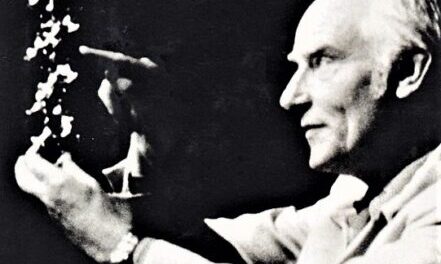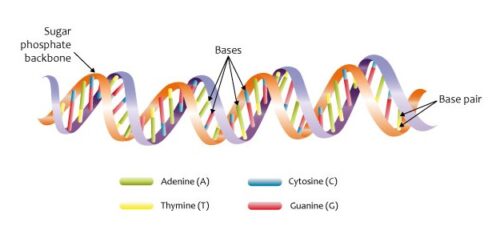
The double-helix of DNA
Dr. Francis Crick (1916-2004) was born in Northamptonshire and was one of three scientists awarded the 1962 Nobel Prize in Physiology or Medicine. This was for proposing the double-helix of DNA, which kick-started the field of molecular biology and research into the genetic code. The first diagram of the spiral staircase structure was drawn by Crick’s wife, Odile, and accompanied their 1953 paper, ‘Molecular Structure of Nucleic Acids: A Structure for Deoxyribose Nucleic Acid’.
Crick met his fellow Prize-winner, the American Dr. James Watson (1928-), while he was working on X-ray diffraction of proteins in the Cavendish Laboratory at the University of Cambridge. Together they investigated the structure of DNA during 1951-3 and produced a solution, aided by crystallography data from the third Prize-winner, Maurice Wilkins (1916-2004) and using their own visualisations. Watson focused on pairing the ‘bases’ which made up the rungs of the ladder, while Crick created the mathematical modelling.

DNA is packed into the twenty-three pairs of human chromosomes and the theory for its structure was a clue to how genetic information is reproduced. Crick’s enduring scientific curiosity meant that he eventually moved on to neuroscience. His particular interest was consciousness, unconsciousness and memory, and how they interact with the senses.
(Top image [cropped]: Vernon Barford School at Flickr.com / CC BY-NC-SA 2.0)
